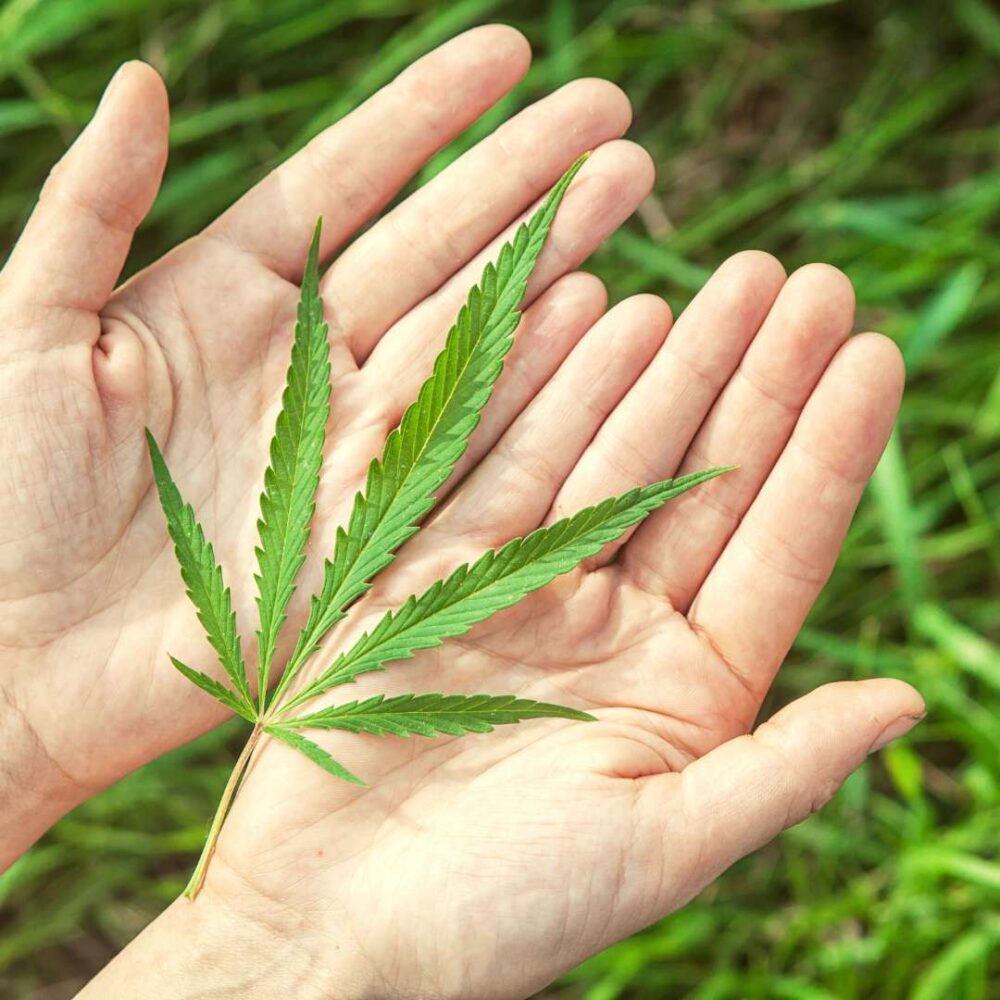
Did you know that CBD and THC are not made in cannabis or hemp plants?
Instead, their precursors (CBDA and THCA) are what is actually created, and only convert to the more well known cannabinoids when heated.
But now we know you could be losing amazing health benefits of these naturally created acidic cannabinoids.
Cannabis plants have been widely used for medicinal purposes for decades now. The cannabinoids found in these plants have been shown, based on new research, to have various therapeutic potentials.
THCA and CBDA are two most common chemical compounds found in high concentrations in a raw cannabis plant. These cannabinoids have been getting lots of attention in the health and wellness industry lately. Scientists are saying they're "the next big thing," and they're studying them on how they can be used to our advantage.
In this blog post, we'll explore the benefits and uses of THCA and CBDA cannabis products, read on.
Article Highlight
- THCA and CBDA are acidic cannabinoids found in the raw cannabis plant.
- THCA has potential benefits including pain relief, anti-inflammatory properties, neuroprotective effects, and potential for cancer treatment and prevention.
- CBDA offers potential benefits such as anti-inflammatory effects and anti-stress properties.
- While research on THCA and CBDA is still in its early stages, their potential benefits make them an area of great interest for researchers and patients alike.
Tetrahydrocannabinolic Acid (THCA): Benefits and Uses
Tetrahydrocannabinolic acid (THCA), is a cannabinoid acid that is present in raw cannabis plants. THCA has a chemical formula of C22H30O4 and is one of the many components that make up the chemical composition of medical cannabis.
Unlike THC, THCA does not have psychoactive effects, which means it does not cause the "high" commonly associated with medical marijuana use.
However, tetrahydrocannabinolic acid does offer a range of potential medical benefits. When medical cannabis is heated or exposed to light, THCA is converted into THC, which can then activate the human endocannabinoid system and affects physiological functions and produce a variety of therapeutic effects.
Research has shown that THCA has potential health benefits, including:
Pain Relief and Anti-inflammatory Properties
Multiple pre-clinical studies have shown that THCA, the acidic form of THC, has impressive pain-relieving and anti-inflammatory properties. Through its interaction with cannabinoid receptors in the body, THCA can prevent the inflammatory process at the cellular level and decrease both acute and chronic pain.
Additionally, THCA tinctures, produced from raw cannabis plant material, can be used to treat inflammation and reduce pain without causing any psychoactive effects. THCA's ability to bind with these receptors makes it an effective option for reducing inflammation and providing relief from pain.
Neuroprotective Effects
Research has shown that THCA molecule has promising neuroprotective properties. It can shield nerve cells from damage caused by inflammation and oxidative stress, which is particularly advantageous for those with neurodegenerative conditions like Alzheimer's, Parkinson's, and Huntington's disease.
THCA achieves this by directly stimulating PPAR-gamma receptors, which regulate neurological and metabolic processes. Unlike other compounds, THCA does not produce any psychoactive effects, making it a safe and effective therapeutic option for managing neurodegenerative diseases.
Anti-nausea and Appetite Stimulation
THCA has shown great promise in treating a variety of health issues. In pre-clinical studies it has been found to be particularly effective in reducing nausea, vomiting, and loss of appetite by activating brain receptors that regulate these symptoms. Additionally, THCA has been found to stimulate appetite, making it a potential treatment option for individuals with eating disorders.
Cannabidiolic Acid (CBDA): Benefits and Uses
Cannabidiolic acid (CBDA), is a non-psychoactive cannabinoid and is the most abundant cannabinoid in hemp flowers. Unlike CBD, CBDA has a carboxylic acid, and is over 450% to 1000% better absorbed than CBD.
When people consume raw cannabis flowers, they are ingesting CBDA along with other cannabinoid acids. However, when cannabis is heated or exposed to light, a chemical reaction occurs that converts CBDA into CBD, which is the compound that has been studied more extensively for its potential benefits to human health.
CBDA serves as a natural precursor to CBD, and it is possible to extract CBDA from hemp plants using CO2 or other extraction methods. After extraction, CBDA can be converted to CBD by removing the carboxyl group through heating, in a process called decarboxylation. This process occurs naturally when consuming cannabis through vaping or smoking.
Current research suggests that CBDA interacts with the body's endocannabinoid system and may offer similar therapeutic effects as CBD. As more studies are conducted on the potential benefits of cannabinoid acids, including CBDA, we may gain a greater understanding of how consuming cannabis in its raw form could impact human health.
Research has shown that CBDA has potential therapeutic benefits, including:
Anti-Inflammatory Effects
CBDA offers significant benefits in combating inflammatory processes and can effectively relieve inflammation. These pre-clinical studies find that its potent properties can alleviate a range of conditions, such as general inflammatory markers, intestinal inflammation and arthritis like symptoms.
CBDA achieves this by impeding the activation of diverse immune cells like macrophages and neutrophils, which otherwise contribute to inflammation. It can do this through inhibition of COX2, a common target for nonsteroidal anti inflammatory drugs (NSAIDs).
Additionally, CBDA reduces the production of cytokines, essential immune system messengers that play a vital role in initiating and sustaining inflammation.
Anti-Cancer Properties
CBDA's anti-cancer properties have been observed in preclinical studies, which have shown that CBDA can slow down breast cancer metastasis by inhibiting the growth and proliferation of breast cancer cells.
Moreover, CBDA works in the same way as some NSAIDs that are used to treat cancer, by inhibiting the activity of COX2. The effectiveness of CBDA in treating cancer is currently being studied in pre-clinical trials, but there is much more research that is needed.
Anti-Nausea and Vomiting Relief
CBDA products have been shown to have anti-nausea effects in rats, which could make it useful for people who have trouble keeping food down. This effect could also be useful for those who suffer from motion induced vomiting or vertigo.
Potential for Anxiety and Depression Treatment
CBDA's potential in treating anxiety and stress is an exciting development that has caught the attention of many. Mental illnesses are often linked to abnormalities in the brain's serotonin and dopamine systems, and research has shown that CBDA can help improve mood and alleviate symptoms in animal models.
The key to CBDA's effectiveness lies in its ability to activate the 5HT1A receptor, a critical serotonin receptor. By activating the serotonin pathway, which is a common target for SSRIs (selective serotonin reuptake inhibitors), CBDA may increase serotonin pathway activity and alleviate symptoms of anxiety and stress.
Synthesis and Consumption Methods of THCA and CBDA
All cannabinoids made by hemp or marijuana plants are in the acidic form. The mother cannabinoid that all the other are derived from CBGA (cannabigerolic acid), and we are going to ignore CBGVA for now since very little of this is typically made.
Both THCA and CBDA are made directly from CBGA, by two enzymes THCA synthase and CBDA synthase respectively. Neither CBDA nor THCA are directly converted to CBD or THC by any cannabis plants, but instead is a result of processing or smoking.
While acidic cannabinoids have been known for a while within the research community, individual acidic cannabinoid benefits were not widely studied due to difficulty in large scale isolation. Recently, companies like Natural Dos have developed new technologies to purify cannabinoid acids, and bring their benefits to the market.
Best consumption methods
There are various consumption methods, but they will not all give similar benefits:
- Smoking/vaping: This method has rapid absorption, but smoking organic matter is not good for your lungs. Additionally, you will get none of the benefits of CBDA or THCA if you smoke since they will be converted into their neutral forms, CBD and THC.
- Edibles: adding CBDA and THCA to gummies, candies, and other tasteful foods is a great way to get the health benefits of acidic cannabinoids. Make sure to check the products CoA (certificate of analysis) before buying since they can be decarboxylated during cooking if proper care is not taken.
- Tinctures: The most widely recognized way of getting high quality THCA and CBDA oil. Make sure you take it under the tongue for maximum absorption.
- Capsules/pill: This form is becoming more popular since you can fit a lot of CBDA or THCA into the pill.
- Microdosing THC: taking a smaller dose of THC, typically 1-3mg, is fast becoming a popular method to not get high but still get the sweet benefits of this cannabinoid.
Conclusion
In conclusion, THCA and CBDA are just two examples of the many non-psychoactive cannabinoids that offer potential medical benefits. Although THCA and CBDA have been shown in pre-clinical studies to have anti-inflammatory, neuroprotective, anti-nausea, and potential anti-cancer properties, other cannabinoids may also offer therapeutic benefits.While studies have demonstrated the potential medical benefits of THCA and CBDA, more research is needed to fully understand their therapeutic potential and how they can be best utilized. Nonetheless, the promise of natural remedies derived from cannabinoids, including THCA and CBDA, provides hope for patients seeking alternative options for managing various medical conditions.



